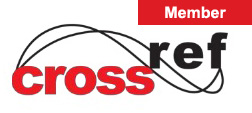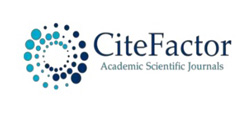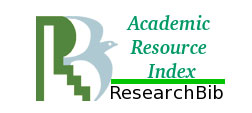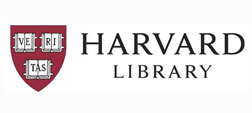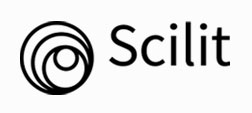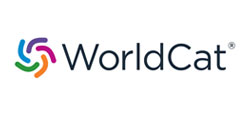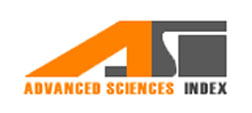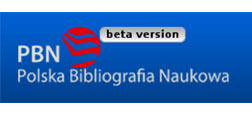Top Links
Journal of Nutrition and Health Sciences
ISSN: 2393-9060
Strong Anti-Inflammatory Effects of Curcumin
Copyright: © 2016 Vetvicka V. This is an open-access article distributed under the terms of the Creative Commons Attribution License, which permits unrestricted use, distribution, and reproduction in any medium, provided the original author and source are credited.
Related article at Pubmed, Google Scholar
Curcumin is a turmeric-based compound with potential health benefits. In our study, we focused on the anti-inflammatory effects of curcumin. We investigated the effect of oral supplementation with curcumin on production of cytokines such as IL-4, IL-10, IFN-γ, and TNF-α both in vitro and in vivo. Mice supplemented with curcumin showed significant protection against LPS-induced endotoxemia effects and against CCL4-induced hepatotoxicity. In addition, we directly compared the biological effects of five different types of curcumin, showing that only some of them have significant biological activity.
Keywords: Curcumin; Inflammation; Cytokines; Liver; Hepatotoxicity
Turmeric, a bright yellow spice isolated from the rhizomes of Curcuma longa, is being used in traditional Indian cooking. However, in addition to the culinary appeals, turmeric and its active ingredients curcumanoids has long been used in both Indian and Chinese medicine. The yellow color of turmeric is due to pigments curcumanoids, with the major factor being curcumin.
Numerous studies reported that curcumin has a wide range of biological activities including antimicrobial, antioxidant, antitumor and anti-inflammatory effects [1]. Curcumin was also evaluated in rheumatoid arthritis inflammatory bowel disease and psoriasis [2-4]. In addition, curcumin has some immunosuppressive activities including expression of cytokines such as IL-1 and TNF-α [5-7]. On the other hand, curcumin enhanced phagocytic activity of macrophages [8]. In addition, this report contradicted the effects on cytokines, as production of both IL-1 and TNF-α was increased. In breast cancer, curcumin induces apoptosis via p53-dependent Bax induction [9]. Another possibility is restoration of tumor suppressor p53 via activation of Nrf2 signalling [10]. Numerous cellular targets include signaling proteins, cytokines, enzymes, adhesion molecules and cell cycle proteins [11]. The differences in the observed effects of curcumin might be caused by differences in bioavailability and metabolism. Some versions of curcumin, particularly nanocurcumin, showed significantly improved efficacy and anticancer activity [12].
Inflammation is one of the most important processes defending the integrity of organisms against insults. In general, inflammation is a process by which the bodies and various substances they produce protect them from infection with foreign organisms, such as bacteria and viruses. However, in some diseases, the immune system triggers an inflammatory response when there are no foreign invaders to fight off. Acute inflammation is short-lived, chronic inflammation is lasting for weeks.
Curcumin has been shown to suppress inflammation in some diseases and promote immune response to acute inflammation [13]. Some studies suggested that curcumin attenuates inflammation by modulation of antioxidant enzymes and downregulation of IL-1β, IL-6 and TNF-α [14]. In our study, we compared the anti-inflammatory effects of five different types of curcumin to see if the inflammatory effects depend on the individual type of curcumin.
Mouse macrophage cell line RAW264.7 (American Type Culture Collection, Manassas, VA, USA) was maintained in culture in RPMI 1640 medium supplemented with 10% FCS at 37 °C in a humidified atmosphere supplemented with 5% CO2.
Xylene, LPS, CFA and CCL4 were purchased from Sigma (St. Louis, MO, USA), fetal calf serum (FCS) from Hyclone Lab (Logan, UT, USA), KLH from Calbiochem (San Diego, CA, USA), rabbit complement from Pel Freeze (Rogers, AR, USA).
Female, 8 week old BALB/c mice were purchased from the Jackson Laboratory (Bar Harbor, ME). Animals were sacrificed by CO2 asphyxiation followed by cervical dislocation. The use of animals was approved by the University of Louisville IACUC committee.
Curcumin C3 complex 95% (Sample #1) was purchased from Sabinsa (Sabinsa Corp., East Windsor, NJ, USA), curcumin powder 65% (Sample #2) and curcumin 94% (Sample #3) from Sigma, Curcumin 95 (95%, Sample #4) from Jarrow Formulas (Los Angeles, CA, USA), and curcumin 95% (Sample #5) from Orcas Naturals (Landing, NJ, USA).
Hepatotoxicity was induced by CCL4 (0.5 ml/kg body weight in olive oil, injected ip.) according to Ferreira, et al. [15]. Mice were randomly divided into several groups and administered orally by gavage.
The enzymatic activities of AST, ALT and ALP were assayed spectrophotometrically by Antech Diagnostics (Louisville, KY, USA). Liver homogenate were prepared by the following technique: livers were excised and rinsed in saline. A small section from each liver was placed in 10% PBS-formalin solution to be used in histological slides. The rest of livers was frozen in liquid nitrogen and stored at -80 °C for later analysis. Frozen liver was grounded to a fine powder and 20-25 mg of powder was solubilized. Protein concentrations were assayed using the bicinchroninic acid kit (Pierce, Rockford, IL, USA). The GSH levels were measured by the GSH test kit (Dojindo Labs, Kumamoto, Japan), SOD activity was determined as described by Prasanna and Purnima and malondialdehyde (MDA) level was estimated as shown in Yadav, et al. [16,17].
RAW264.7 cells were cultivated in 96-well plates at 2.5x105/ml concentration for 24 hrs at 37 °C. The next day, the media were removed and the cells were treated with new complete media supplemented with 500 ng/ml LPS and tested samples at appropriate concentrations and cultivated for further 24 hr. Medium was collected, stored at -80 °C and used for subsequent evaluation of TNF-α.
Splenic macrophages were isolated from BALB/c mice and stimulated as previously described [18]. Briefly, spleen cells were cultivated for 3 hrs in RPMI-1640 medium supplemented with 10% FCS at 37 °C in a 5% CO2 humidified incubator. After removal of nonadherent cells, adherent macrophages were isolated by scrapping.
Lymph nodes were isolated from BALB/c 9 days after priming with 100 μg KLH in CFA in the footpads. The suspension was depleted of B lymphocytes by adherence to goat-anti-mouse-Ig-coated Petri dishes for 2 hr at 4 °C and of CD8+ lymphocytes by incubation with anti-mouse CD8 antibody followed by addition of rabbit complement for 45 min at 37 °C. Resulting population was more than 95% pure CD4+ T cell population, These cells were incubated in 96-well tissue culture plates at 3x105 cells/well concentration with macrophages (1x105 cells/well) and KLH (10 μg/ml) for 2 (IL-10) or 4 (IFN-γ and IL-4) days [19].
Thirty minutes after dosing with test substances, 0.03 ml of xylene was topically applied to the anterior surface of the right ear. The left one was used as a control. Two hours after xylene application, animals were sacrificed and both ears were removed and weighted. To reduce the errors arising from individual body weight, the relative weights of the ears were calculated along with the differences between the intact ear and induced ear as follows [19]:
Relative weight (%) = (absolute ear weight/body weight) x 100
We evaluated the prophylactic effects of curcumin treatment on LPS-induced endotoxemia effects. Curcumin was given prophylactively 18 hrs prior to administration of LPS. Collected sera were analyzed for the levels of IL-6, IL-10, and TNF-α by use of ELISA kits (R&D Systems, Minneapolis, MN) according to the manufacturer’s instructions.
Student’s t-test was used to statistically analyze the data.
First, we focused on LPS-induced production of TNF-α by RAW264.7 cells in vitro. As shown in Figure 1, a concentration-dependent inhibition of TNF-α secretion was observed after adding different doses of samples into the culture medium. Control (LPS) groups showed 16,288 ± 3,100 pg/ml of TNF-α In untreated mice, no secretion of TNF-α has been found.
IL-10 is well known to regulate production of IFN-γ and IL-4 in CD4-positive T cells, therefore we evaluated the cytokine profile of CD4+ cells responding to the antigen after addition of curcumin-treated macrophages. As macrophages were washed several times after termination of their incubation with curcumin, the direct effect of curcumin on lymphocytes was eliminated. Figure 2 shows that all samples significantly lowered secretion of Il-10. In case of IFN-γ only samples #1, 3 and 5 showed significant effects (Figure 3). The last Figure shows effects on IL-4 production, which was very low in control group. All curcumin samples significantly stimulated IL-4 secretion, with sample #1 being the most active (Figure 4).
The xylene-induced acute inflammation mouse ear model has generally been used as a classic model of inflammation. In this model, we tested the direct anti-inflammatory effects of feeding with curcumin by observation of ear weight. Table 1 summarized the effects of curcumin and shows whereas all samples significantly decreased the relative weight of induced ears, only sample #1 and in the case of relative weight sample #3 also decreased the relative weight.
In evaluation of the prophylactic effects, we found that sample #1 and sample #3 consistently inhibited secretion of IL-6, IL-10 and TNF-α at all three intervals post LPS injection. Sample #5 was active only in case of IL-10 and TNF-α and samples #2 and #4 inhibited only production of TNF-α (Table 2).
In the last part of the study, we focused our attention on CCL4-mediated hepatotoxicity. After CCL4 treatment, the groups were fed with individual samples for 14 days. Use of CCL4 caused significant stimulation of serum levels of AST, ALT and ALP. Treatment with curcumin showed that all samples significantly decreased the levels of these enzymes, the most active samples were sample #1 and #3 (Table 3). Similar data were observed when we focused our attention on hepatic enzymes (Table 4). CCL4 reduced levels of GSH and SOD, but stimulated levels of MDA. Individual curcumin samples helped to improve the liver damage tested by enzymatic levels. The most active samples were samples #1, #4 and #5.
Turmeric/curcumin has a long history as a spice, dye and remedy. Curcumin contains app. 3-5% of curcuminoids and up to 5% of essential oils and resins varying on geographical region and isolation [20,21]. It has been proposed to be a therapeutic molecule having beneficial properties in arthritis, cancer, cardiovascular problems, diabetes, neurological diseases and bowel diseases [22,23].
The most studied effects of curcumin are anti-inflammatory effects, observed both in animal and human models [24]. Cell culture studies revealed that curcumin inhibits the transcriptional factor NFκB and increased caspase 3 activity [25]. Due to these effects, curcumin also suppresses the paclitaxel-induced NFκB pathway in cancer cells and shows anti-apoptotic properties. In lung cancer model, curcumin suppressed not only expression of NFκB, but also cyclooxygenase 2 and matrix metalloproteinase-9 [26]. In an arthritis model, curcumin inhibited activity of neutrophilis granulocytes [27].
RAW264.7 cell experiments confirmed the anti-inflammatory effects of curcumin and are in agreement with the previously published data [21]. Compared to LPS-stimulated controls, curcumin led to a dose-dependent reduction in the formation of pro-inflammatory cytokines. Similarly, an experimental model of LPS-stimulated production of TNF-α showed a dose-dependent reduction of the TNF-α secretion by cells exposed to curcumin. TNF-α is a major cytokine involved in inflammation [28]. A similar reduction of the serum level of TNF-α was observed in rats with experimental nephrotoxicity [29]. In addition to TNF-α curcumin supplementation also resulted in inhibition of LPS-induced IL-10 and IFN-γ and in stimulation of IL-4 secretion, suggesting that the mechanism of action for curcumin contains a component for differential regulation of cellular immune response during inflammation similar to the effects found for lactoferrin [30]. A study of long term effects of curcumin showed downregulation of IL-6 and TNF-α production [31].
As the cell density might be an important factor in these studies, we used the same cell numbers as originally described [32]. The concentrations of curcumin used in these experiments had no effects on proliferation of human breast cancer cells ZR-75-1 or human prostate cancer cells PC3 or RAW264.7 (data not shown). The anti-inflammatory effects of curcumin are probably due to its ability to modulate various signaling pattern, including NF- κB, p38 mitogen-activated protein-kinase and COX-2 [33,34].
Xylene-induced inflammation is well-established model of acute inflammation. As the result of pretreatment of mice with curcumin, the changes associated with acute inflammation such as the marked increase of induced ear weight and increase of the thickness of ear tissue were significantly suppressed. These results represent direct evidence that food supplementation with curcumin inhibits the induction of the acute inflammation.
Curcumin has been found to have palliative effects on different types of experimentally-induced colitis [34,35]. In a IL-10 gene-deficient model of colitis, curcumin supplementation resulted in potent anti-inflammatory effects mediated via inhibition of secretion of pro-inflammatory cytokines [36]. Inflammatory bowel disease is a family of health problems defined as a form of autoimmune disease manifested by persistent bowel inflammation. Curcumin has both anti-inflammatory and anti-oxidant effects, having strong potential for innovative treatment of inflammatory bowel disease [37]. In vivo and in vitro studies showed that curcumin treatment resulted in different a reaction in idiopathic inflammatory bowel disease and in Crohn’s disease [38].
Some studies suggested hepatoprotective effects of curcumin on CCL4-mediated oxidative stress [39]. Experimentally-induced liver damage (regardless if the cause is ethanol, LPS or CCL4) is of intense interest for both clinicians and researchers. CCL4 in particular is the most intensively studied model for xenobiotic-induced oxidative hepatotoxicity [40]. Most of the toxic effects are caused by trichloromethyl free radicals [41]. Many authors have demonstrated that lipid peroxidation is closely associated with liver pathogenesis. MDA is a byproduct of oxidant-induced liver protein and lipid oxidation, GSH is a component of the antioxidant system. SOD represents important endogenous antioxidant and acts via dysmutation of superoxide anions. The efficacy of any hepatoprotective molecule depends on its ability to suppress damaging effects. The results of our investigation revealed that daily oral supplementation with curcumin helped to reduce the levels of ALT and AST in the serum of tested mice. It is possible that the protective effects are caused by strong potentiation of antioxidant protective system, supported by protection of the GSH levels depressed due to the liver damage by hepatotoxins. CCL4 is metabolized by the cytochrome 450 to the trichloromethyl free radical which subsequently forms trichloromethyl peroxyl radical attacking lipids on the endoplasmic reticulum [42,43]. In summary, our findings showed that inflammatory response to liver toxicity was significantly decreased by treating the animals with orally-supplemented curcumin. These effects were in agreement with inhibiting of the changes in molecules such as AST, ALT, ALP, GSH, SOD and MDA, caused by experimentally-induced liver damage. These findings correspond to the effects observed for fermented Curcuma longa extract [39].
The aim of this study was to directly compare the biological effects of five various samples of curcumin. Based on our results, sample #1 (Sabinsa) was consistently the most active sample, followed by sample #3 (highly purified sample from Sigma). We can conclude that despite the fact that curcumin truly represents a biologically active natural molecule, its activity differs widely based on the type of sample. Clearly, not all curcumins available were created equal.
| Figure 1: Effects of different doses of curcumin on LPS-mediated TNF-α secretion by RAW264.7 cells. Values represent a mean of three independent experiments. *Significant difference between control and experimental group at P < 0.05 level |
| Figure 2: Evaluation of serum IL-10 levels after curcumin treatment in LPS-induced endotoxaemia. Values represent a mean of three independent experiments. *Significant difference between control and experimental group at P < 0.05 level |
| Figure 3: Evaluation of serum IFN-g levels after curcumin treatment in LPS-induced endotoxaemia. Values represent a mean of three independent experiments. *Significant difference between control and experimental group at P < 0.05 level |
| Figure 4: Evaluation of serum IL-4 levels after curcumin treatment in LPS-induced endotoxaemia. Values represent a mean of three independent experiments. *Significant difference between control and experimental group at P < 0.05 level |
Group |
Absolute weight (g) |
Relative weight (%) |
||
|---|---|---|---|---|
Intact ear |
Induced ear |
Intact ear |
Induced ear |
|
Control |
0.132 ± 0.012 |
0.182 ± 0.031 |
0.461 ± 0.051 |
0.617 ± 0.111 |
Sample #1 |
0.121 ± 0.008 |
0.141 ± 0.015*,** |
0.444 ± 0.043 |
0.501 ± 0.067*,** |
Sample #2 |
0.128 ± 0.015 |
0.175 ± 0.023* |
0.460 ± 0.051 |
0.602 ± 0.098* |
Sample #3 |
0.133 ± 0.011 |
0.161 ± 0.043*,** |
0.464 ± 0.045 |
0.555 ± 0.089* |
Sample #4 |
0.135 ± 0.014 |
0.171 ± 0.026* |
0.461 ± 0.039 |
0.599 ± 0.102* |
Sample #5 |
0.127 ± 0.011 |
0.173 ± 0.023* |
0.471 ± 0.052 |
0.565 ± 0.087* |
| Mean ± SD (n=9). *Significant differences between intact and induced ear at P ≤ 0.05 level, ** Significant differences between control and experimental induced ear at P ≤ 0.05 level Table 1: Effects of tested samples on changes in ear weight |
||||
Group |
IL-6 |
IL-10 |
TNF-α |
|||
|---|---|---|---|---|---|---|
2 hrs |
6 hrs |
2 hrs |
6 hrs |
2 hrs |
6 hrs |
|
PBS |
0 |
0 |
0 |
0 |
0 |
0 |
LPS |
5,201 ± 626 |
244 ± 18 |
222.3 ± 18.2 |
52.3 ± 9.4 |
12,363 ± 1,017 |
393 ± 22.7 |
Curcumin C3 |
2,515 ± 232* |
111 ± 12* |
101.1 ± 10.1* |
18.1 ± 3.3* |
737 ± 39.9* |
166 ± 15.1* |
Sigma low |
4,486 ± 365 |
201 ± 23 |
179.8 ± 19.3 |
47.2 ± 3.4 |
3.833 ± 474.2* |
277 ± 22.9* |
Sigma high |
3,363 ± 323* |
155 ± 25* |
155.6 ± 13.9* |
37.1 ± 3.5* |
2,061 ± 199.3* |
209 ± 11.8* |
Sample 1 |
5,101 ± 477 |
223 ± 17 |
177.9 ± 20.3 |
39.9 ± 4.2 |
5,636 ± 636.3* |
315 ± 37.8* |
Sample 2 |
4,825 ± 399 |
228 ± 21 |
180.5 ± 18.9 |
35.6 ± 4.1* |
4,282 ± 428.2* |
299 ± 21.5* |
| Mean ± SD (n=9). *Significant differences between positive control (LPS) and curcumin treated groups at P ≤ 0.05 level Table 2: Effects of tested samples on cytokine production |
||||||
Sample |
AST |
ALT |
ALP |
|---|---|---|---|
(IU/L) |
(IU/L) |
(IU/L) |
|
PBS |
72.5 ± 5.2 |
19.1 ± 2.8 |
24.2 ± 2.1 |
CCL4 |
179.7 ± 13.2 |
177.6 ± 19.3 |
178.7 ± 15.7 |
Sample #1 |
73.9* ± 6.0 |
22.2* ± 4.1 |
31.1* ± 4.6 |
Sample #2 |
138.5* ± 9.8 |
51.5* ± 5.8 |
40.3* ± 4.4 |
Sample #3 |
81.5* ± 8.8 |
22.3* ± 4.9 |
27.0* ± 2.2 |
Sample #4 |
111.2* ± 9.9 |
70.2* ± 4.7 |
80.3* ± 8.3 |
Sample #5 |
92.2* ± 4.4 |
23.8* ± 3.3 |
28.6* ± 3.4 |
| *Significant difference against CCL4 group at P ≤ 0.05 level Table 3: Effects of tested samples on serum ALT, AST, and ALP |
|||
Sample |
GSH |
MDA |
SOD |
|---|---|---|---|
(μmol/mg protein) |
(nmol/ mg protein) |
(U/mg protein) |
|
PBS |
18.1 ± 1.2 |
8.7 ± 0.8 |
58.2 ± 6.1 |
CCL4 |
9.7 ± 0.9 |
77.6 ± 9.1 |
18.7 ± 1.5 |
Sample #1 |
23.0* ± 0.9 |
25.2* ± 9.6 |
40.4* ± 4.5 |
Sample #2 |
12.5 ± 1.7 |
59.4 ± 4.5 |
29.9* ± 2.5 |
Sample #3 |
13.5 ± 1.8 |
21.3* ± 2.1 |
20.1 ± 2.3 |
Sample #4 |
14.3* ± 1.1 |
15.2* ± 1.7 |
23.8 ± 3.3 |
Sample #5 |
10.9 ± 1.6 |
43.2* ± 4.3 |
38.8* ± 4.3 |
| *Significant difference against CCL4 group at P ≤ 0.05 level Table 4: Effects of tested samples on level of hepatic enzymes GSH, MDA and SOD |
|||


